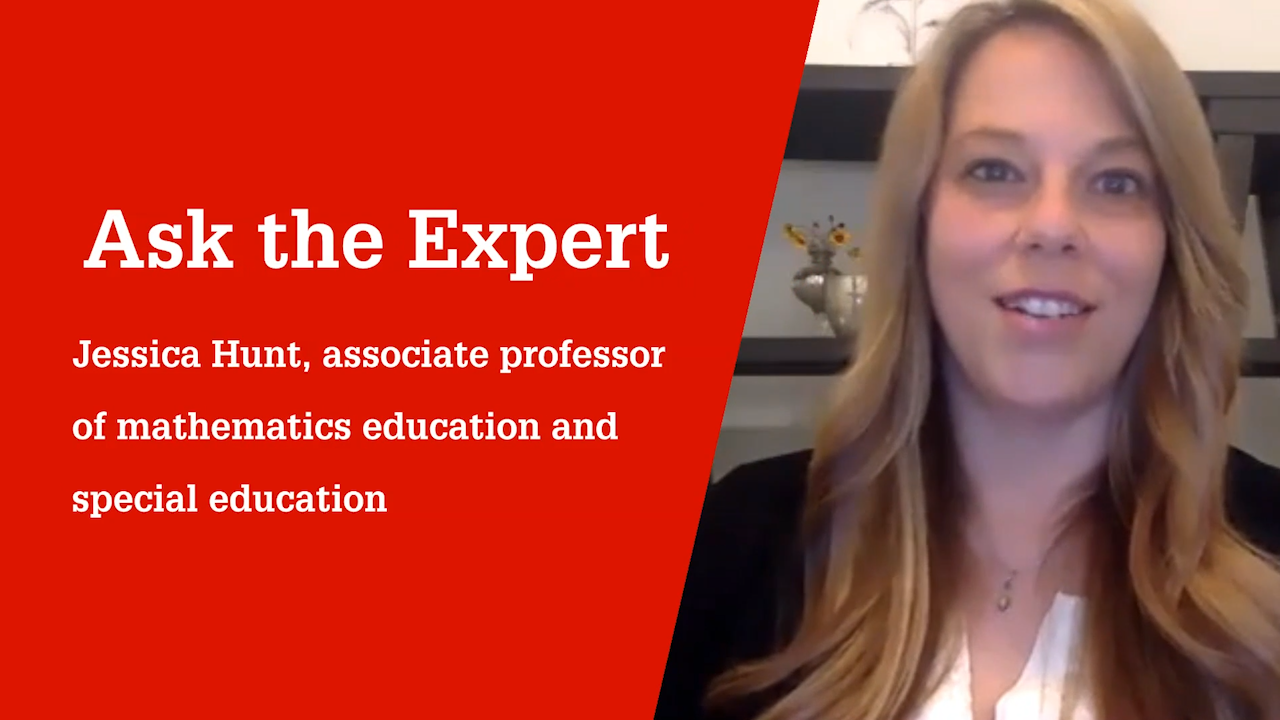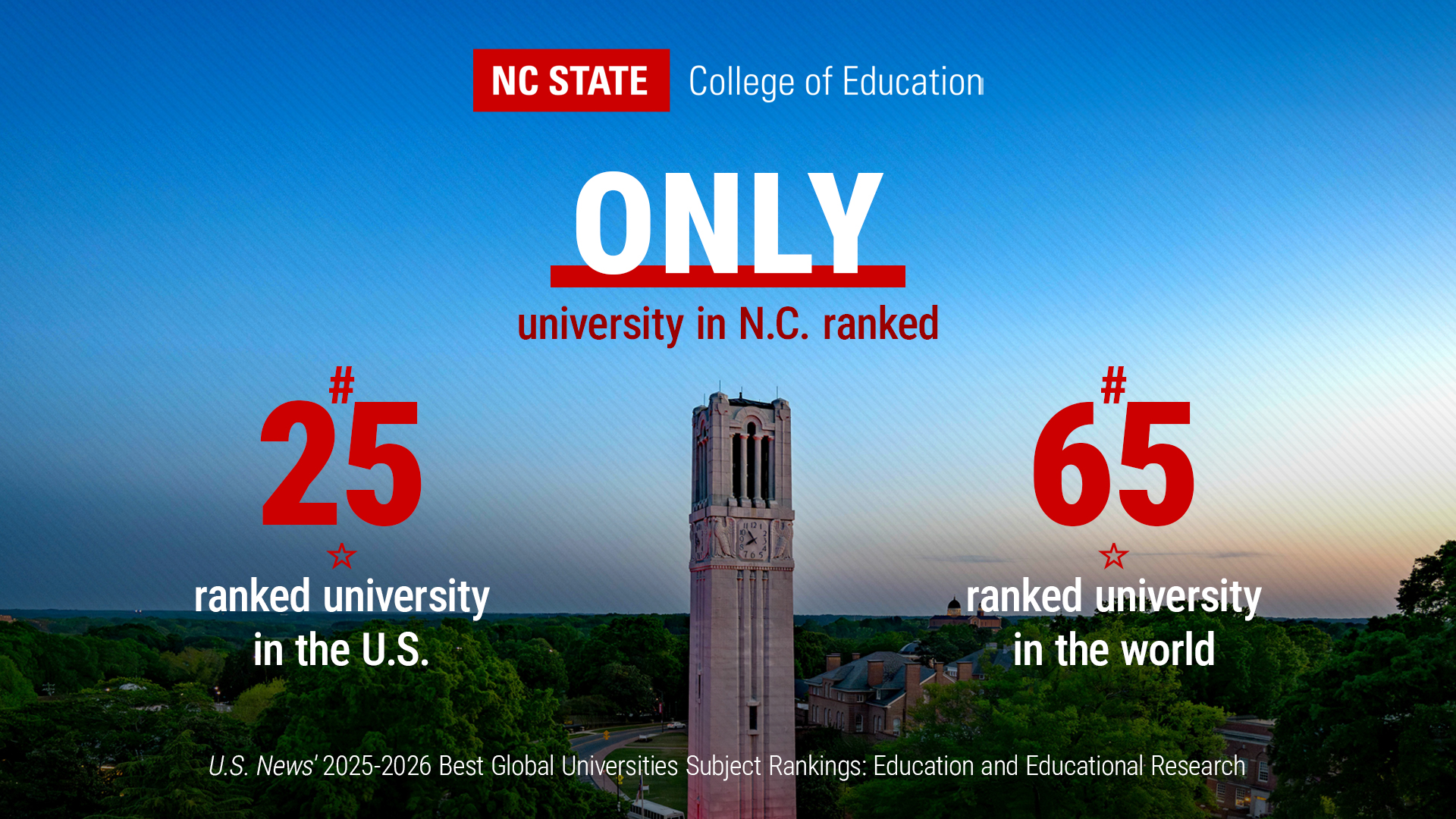Ask the Expert: How Can Teaching Math From a Strengths-based Perspective Help Students Succeed? ‘When Teachers Utilize a Student’s Strengths, They Position Them as Already Possessing a Way of Knowledge That They Use To Understand the World,’ Says Associate Professor Jessica Hunt
This is part of the monthly “Ask the Expert” series in which NC State College of Education faculty answer some of the most commonly asked questions about education.
Students’ thinking is often evaluated from a deficit standpoint, focusing on what they don’t yet know, says Jessica Hunt, Ph.D., an associate professor of mathematics education and special education in the NC State College of Education. This is especially true when it comes to teaching mathematics to students with disabilities.

Instead of focusing on what students don’t know, Hunt says that it is best for teachers to approach lessons from a strengths-based perspective. This means focusing on what students already know, uncovering their strengths and building on those strengths through instruction. Her research focuses on redirecting instructional practice across both math education and special education for students with math difficulties and disabilities.
“When teachers utilize a student’s strengths, they position them as already possessing a way of knowing that they use to understand the world and to learn, and that supports them to build more productive math dispositions, agency and powerful math concepts,” Hunt said. “It means creating and sustaining views of the student as mathematically able and mathematically brilliant. When teachers do that, they remove the ‘problem’ from the student and place it as a challenge on instructional design and classroom interactions.”
To use a strengths-based perspective, educators must uncover what their students know and understand the ways that they’re thinking about specific problems.
For example, Hunt shared the scenario of a student named Joe* who is presented with a fraction task that asks him to share five tacos equally among two people. In her example, Joe’s solution is that each person gets two tacos and one is left over, instead of each person getting two-and-a-half tacos.
A teacher approaching instruction from a strengths-based perspective, Hunt said, would acknowledge that Joe has a specific way of thinking about equality because he gives each of the two people the same number of tacos and pushes the final taco aside because there is not enough for each person to get a whole one. He also had a strategy for creating groups of two, which an educator could use to help him build fractional concepts.
“A strengths-based perspective means that we as educators use instruction as a mechanism to uncover strengths and knowledge and build from them,” Hunt said. “We reframe our thinking from ‘what does the student not know’ to the far more powerful question of ‘what does the student know and how can I build from it?’”
Approaching teaching from a strengths-based perspective, Hunt said, intertwines with three important elements regarding how people learn:
- Use the ideas that somebody already has,
- Encourage active thinking through a good task and provide opportunities for reflection, and
- Provide ways to connect thinking to the thinking of others.
To help connect students’ prior knowledge in both mathematics and general information to lessons, Hunt recommends observing students in both academic and nonacademic settings to understand spaces students feel competent in. Similarly, engaging in conversations with students about their interests, how they experience math in their homes and neighborhoods and how they feel as mathematicians can help uncover prior knowledge.
Once teachers have gotten to know their students, broad, well-designed tasks (those that are both accessible and have potential to expand multiple mathematical ideas) can act as platforms to both bring forward and build upon all types of students’ prior knowledge.
It is important, Hunt said, to give students opportunities to connect their informal ideas to mathematics concepts and extend their thinking in order to engage with the content in ways that help them to make sense of what they’re learning.
“I think one overall strategy would be to think about classroom and intervention spaces as environments where teachers know that all students possess a way of knowing math. So, if a student brings forward knowledge that we don’t expect, that knowledge is valid,” Hunt said. “Students are mathematicians and they learn by connecting what they already know to the results of things that they do in action and then reflecting upon and discussing those results with other people.”
In a case study under review for publication, Hunt demonstrates how uncovering students’ strengths ultimately helped to support the advancement of their reasoning when approaching fraction problems.
When working with a student named Candace,* Hunt discovered that she found meaning in measurement interpretations of fractions while also bringing forward differences in working memory. Meanwhile, a student named Lili,* who had cognitive differences related to language and auditory comprehension, viewed fractions as ratios. By providing accessible tasks that allowed each student to conceptualize problems in ways that were meaningful to them and then giving them an opportunity to reflect and verbalize upon their reasoning, the students were able to increase their understanding.
In another example, a student named Jim* connected fractions and whole numbers very well, using midpoints and symmetry, but a motor coordination difference known as dyspraxia limited his ability to engage with fraction activities that involved physically cutting up or measuring things in typical ways. The use of accessible tasks, however, allowed for him to represent and express his knowledge and understanding through different methods.
“Strengths-based instruction is not just embracing the notion that students think differently and allowing that in instruction, but it’s also meeting that reality with accessible instruction that adapts to and responds to that difference in ways that allow students to build from their own reasoning,” Hunt said. “Doing so, at least in my experience, is fundamental to student learning.”
*All student names used in this piece are pseudonyms
Video by Ryan Clancy
- Categories:



